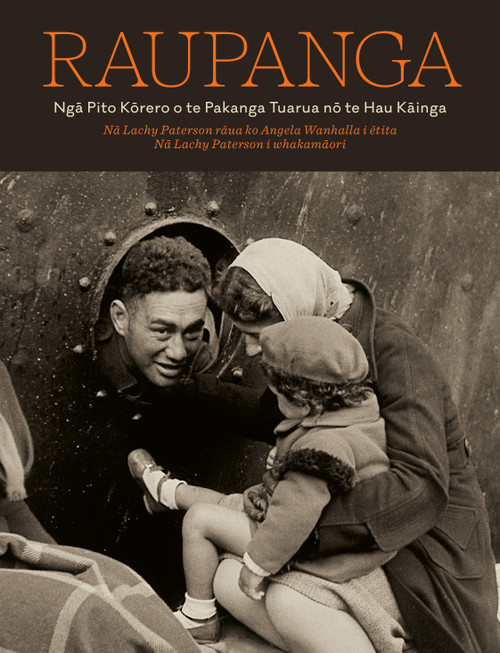
Mokorua: Ngā kōrero mō tōku moko kauae – My story of moko kauae
Ariana Tikao. Photo essay by Matt Calman.
One woman’s journey to her moko kauae as an expression of her Kāi Tahu identity.
I kā rā o mua, I would know my place
in my tīpuna’s time, I would know my face.
Mokorua is a revealing and emotional account of one woman receiving her moko kauae.
Ariana Tikao grew up in suburban Christchurch in the 1970s and ’80s surrounded by te ao Pākehā. This book tells the story of Ariana exploring her whakapapa, her whānau history and her language. This is one woman’s story, but it is interwoven with the revival of language, tikanga and identity among Kāi Tahu whānau over the last thirty years.
Ariana’s journey culminates in her decision to take on Mokorua – her moko kauae – from tā moko artist Christine Harvey. After an emotionally charged ceremony that brought together whānau, young and old, for songs and tautoko, hugs and tears, Ariana writes: ‘Our whānau had reached another milestone in the decolonisation process – or, rather, in our journey of reindigenising ourselves, becoming who we always were.’
Through Ariana’s words, te reo Māori text by her hoa tāne Ross Calman, and an intimate, moving photo essay by Matt Calman, Mokorua reveals the journey of one woman reclaiming her Māori identity.
My moko has now surfaced from beneath my skin, and she, Mokorua, has revealed
herself in her green-lined goodness.
________
I kā rā o mua, I would know my place
in my tīpuna’s time, I would know my face.
He kōrero whāwhāki, he kōrero pūkare a Mokorua mō tētahi wahine e whiwhi ana i tōna moko kauae.
I tipu ake a Ariana Tikao i te tāone o Ōtautahi i ngā tau 1970 me 1980 e karapotia ana e te ao Pākehā. Kei tēnei pukapuka ngā kōrero mō Ariana e tūhura ana i tōna whakapapa, i ngā kōrero mō tōna whānau, i tōna reo anō hoki. He kōrero tēnei mō te wahine kotahi, engari e pāpā ana ngā kōrero ki te whakarauoratanga o te reo, ngā tikanga me te tuakiri o ngā whānau Kāi Tahu i roto i ngā tau e toru tekau kua hipa.
Ko te mutunga ake o tēnei haerenga he whakataunga nā Ariana kia tāngia ia ki a Mokorua – tōna moko kauae – e te tohunga tā moko, e Christine Harvey. Mō te tānga, he wā ka kitea te tino tokonga ake o ngā kare ā-roto, ka noho tahi te whānau, rangatahi mai, pakeke mai, ki te tautoko mā te waiata, mā te awhiawhi, me te roimata. Ki tā Ariana: ‘Kua eke tō mātou whānau ki tētahi taumata anō o te tukanga wetewete tāmitanga – o tō mātou haerenga kia tū anō mātou hei iwi taketake, hei tangata tūturu.’
Mā roto i ngā kupu a Ariana, ngā kupu reo Māori a tōna hoa tāne a Ross Calman, me ngā whakaahua kauawhiawhi, pūkare a Matt Calman, ka whakaatu a Mokorua i te haerenga o tētahi wahine kia riro anō i a ia tōna tuakiri Māori.
Kua maiea tōku moko mai i raro i tōku kiri, kua whakakite ia, a Mokorua, i a ia anō
hei taonga i roto i ōna kiokio kākāriki.
Author
Ariana Tikao is a singer, taonga puoro musician and writer of Kāi Tahu descent, and recipient of a 2020 Arts Foundation Laureate award. She writes waiata, poetry and creative non-fiction exploring themes relating to her Kāi Tahu identity and mana wahine, often drawing on historical kōrero from her ancestors. She is among the current generation of artists and leaders rejuvenating taonga puoro, following in the footsteps of Hirini Melbourne and of her mentors Richard Nunns and Brian Flintoff.
Photographer
Matt Calman is of Ngāti Toa, Ngāti Raukawa-ki-te-tonga, and Kāi Tahu descent. He is a trained artist, with a Diploma of Arts (with Hons) from the Design and Arts College of New Zealand, majoring in photography, and went on to study journalism, graduating with a Diploma in Journalism from Massey University. Matt worked at the Dominion Post from 2007 to 2010, and is the author of The Longest Day (Allen and Unwin, 2020). Matt received his own tā moko from Porirua artist Wiremu Barriball in 2016. He lives in Ōtautahi with his wife, Ranui Calman, and their daughters.
Creator of te reo Māori Text
Ross Calman (Ngāti Toa, Ngāti Raukawa-ki-te-tonga, Kāi Tahu) is a freelance writer, editor and licensed translator. He is the author of a number of works on aspects of Māori history and culture, including most recently He Atua, He Tangata: The World of Māori Mythology (with A.W. Reed; Oratia, 2022), He Pukapuka Tātaku i Ngā Mahi a Te Rauparaha Nui/A Record of the Life of the Great Te Rauparaha (AUP, 2020), and Te Tiriti o Waitangi (with Toby Morris, Mark Derby and Piripi Walker; Lift, 2019). He is Ariana’s husband and Matt’s cousin.
Moko artist
Christine Harvey (Ngāti Mutunga o Wharekauri, Moriori, Te Ātiawa ki Te Tauihu, Ngāti Toa Rangatira, Kāti Māmoe) was the first wahine to commit to the revival of tāmoko in the mid-1990s. After training as a painter initially, she was drawn into toi Māori and was mentored by artists and tohunga tā moko such as Riki Manuel. Christine also works with other media, including stone, metal, bone, wood and resins. Recently she has been experimenting with muka fibres and 3D design based on Māori and Moriori traditional art forms.
Endorsements
‘He matapihi ki te ao o te wahine Māori, ngā taukaea aroha o te whānau, me te kōingotanga o te ngākau ki te whakarauora mai i ngā āhuatanga o ngā tūpuna. Rerehua!’
‘A window into the world of a Māori woman, deep family bonds and the fervent pull to revitalise the ways of our old people. Stunning!’
— Stacey Morrison
‘He whakaaro matawhaiaro, he momo noho puku tēnei pukapuka, hei whakatuwhera i te wheako moko kauae o tēnei wahine ki te ao whānui. E haere tonu ana a Ariana i tēnei tūāoma ki tōna ake tuakiri Kāi Tahu. E kī ana te kōrero, “tāia ō moko, hei hoa matenga mōu”, waihoki, mārama tīahoaho ana te putanga mai o te tokorua piripono nei.’
‘A personal reflection, this book is akin to a meditation, which opens up the moko kauae experience of this woman to the wider world. Ariana traverses this stage of her identity journey as Kāi Tahu. It is said, “take your moko as a friend for life”, likewise, we witness the emergence of this pair of lifelong companions.’
— Hinemoa Elder




